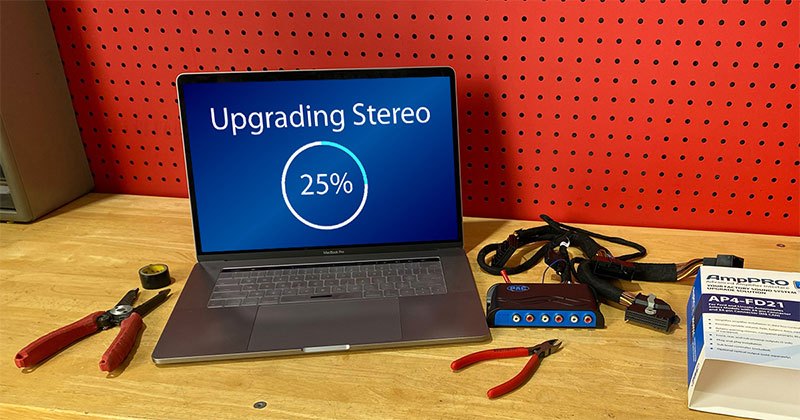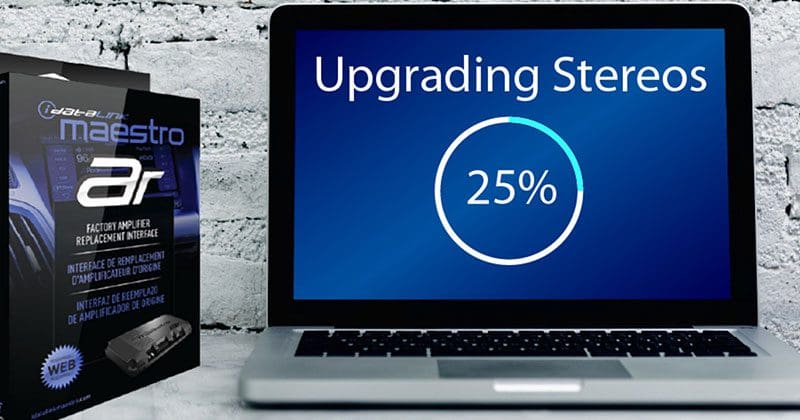As vehicle manufacturers work to reduce the number of wires that need to be run in a vehicle, more and more have switched to using the vehicle data bus to control amplifiers. Using data commands in concert with digital or fixed-level audio signals also helps to ensure that these audio systems deliver noise-free performance. Finally, with the volume control and signal processing built into the amplifier, manufacturers can use similar system designs across a variety of vehicles by loading different calibrations within the amplifier. Having your installation technician upgrade these systems with new amplifiers isn’t typically difficult, but it requires extra hardware.
Conventional Car Audio System Design
In classic analog audio systems, the volume control for the system is built into the source unit. When you turn the volume up, the voltage of the audio signal going to the amplifier increases. The drawbacks of these systems are that there is a relatively low voltage of that audio signal between the source unit and the amp, and that they are susceptible to picking up unwanted noise.
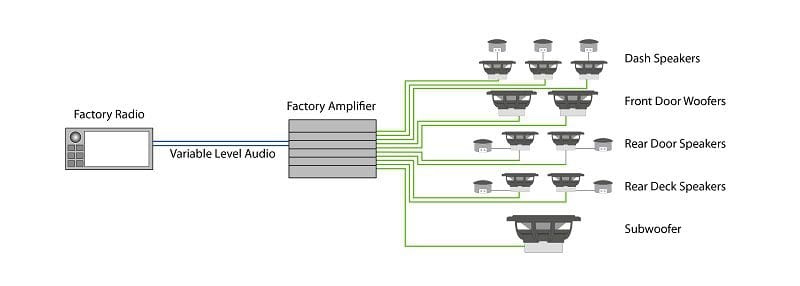
Data Bus Audio Systems
In most new mid- to high-level audio systems, the CAN bus is used to send digital commands from the source unit to the amplifier. These commands include changes to volume level, fader changes and instructions to load different presets depending on vehicle conditions. For example, Ford Mustang convertibles load a different configuration depending on whether the roof is up or down.
In terms of the audio signal from the source unit to the amp, these are passed as moderate voltage, fixed-level analog signals or as digital signals using copper wire or fiber-optic connections.
When you adjust the volume on the source unit, a command is relayed to the signal processor in the amplifier. The amplifier adjusts its output level to turn the music up or down.
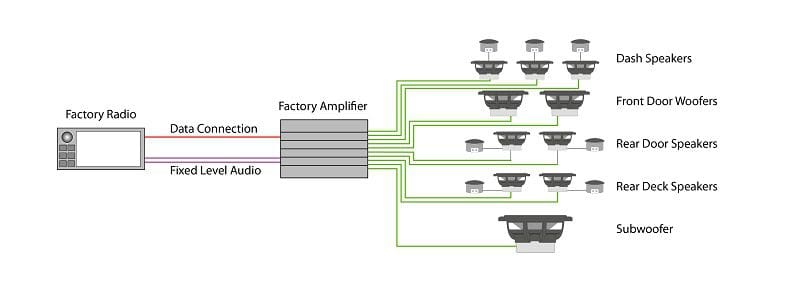
Upgrading Audio Systems with Data Bus Communication
To upgrade these audio systems, you’ll want your installer to add new amplifiers, a digital signal processor, new speakers and a subwoofer system. The DSP is pretty much mandatory since the factory-installed systems are often carefully calibrated to deliver good imaging and neutral tonal balance. Forgoing equivalent calibration will result in a reduction in perceived quality, even if the system has more bass and plays louder.
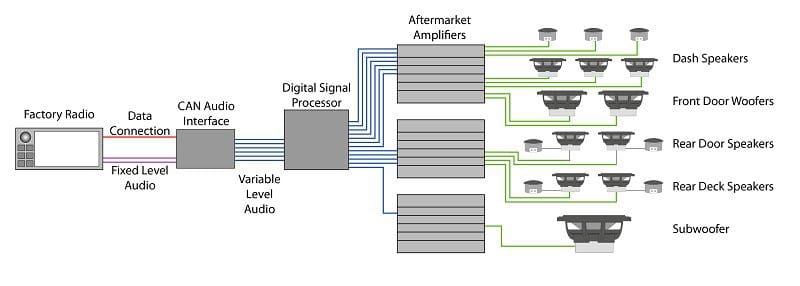
The first thing you’ll need is an interface that can understand the commands from the radio. Companies like Nav-TV, iDatalink and PAC offer solutions for these applications. The Nav-TV ZEN Audio and PAC AmpPRO 4 modules provide RCA analog or Toslink digital outputs that can be fed into your processor and amplifiers.
The Maestro AR module adds the option of communicating directly with a signal processor from ARC Audio, Audio Control or Audison so that commands from the radio are executed in the digital domain inside the processor itself.
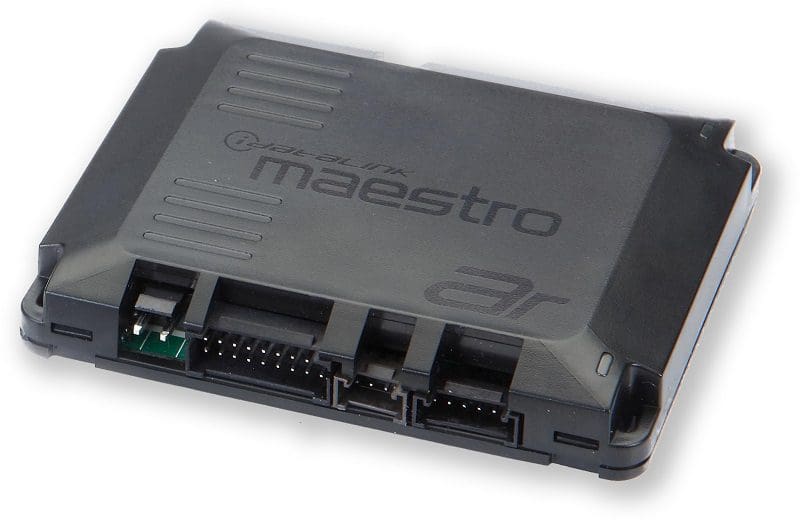
Because many of these interfaces are universal in terms of their hardware, they have to be combined with appropriate interface cables and flashed with vehicle-specific software by your installation technician before installation. As such, this isn’t a do-it-yourself kind of project.
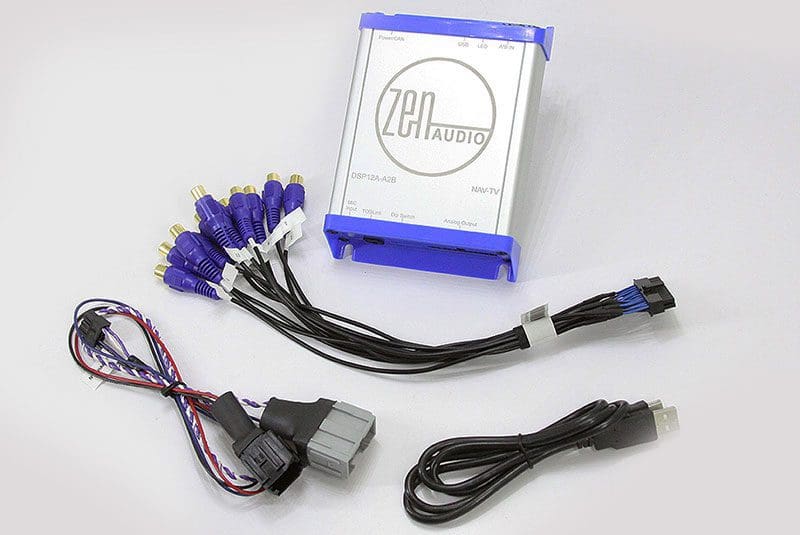
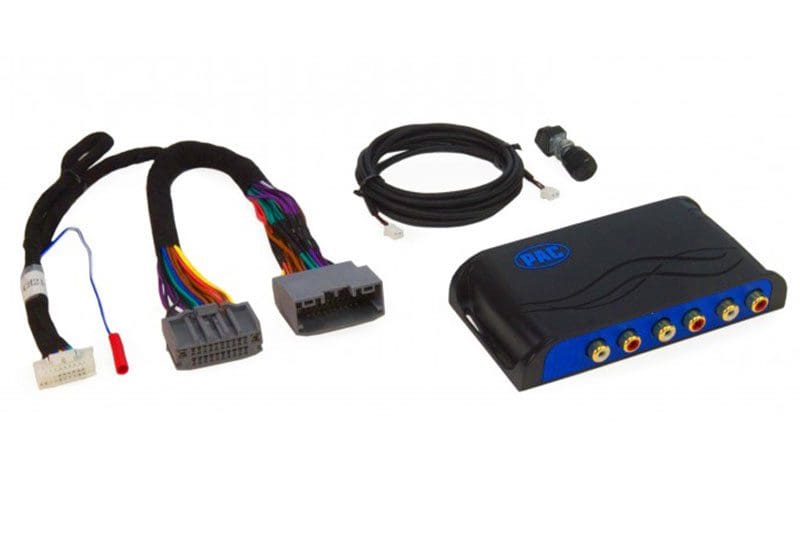
Benefits of Audio Upgrades Using the Factory Radio
If you drive a late-model vehicle that includes an audio system that is integrated into the dash in a way that prevents the addition of an aftermarket radio, then you have no choice but to add a DSP and new amplifiers to power the speakers. Likewise, using the factory source unit helps to maintain the overall appearance of the vehicle, which reduces the potential for theft. Finally, all elements of the interface, including touchscreens, instrument cluster displays, heads-up displays, steering wheel controls and center console controls, will continue to function normally with the factory-installed radio as the source for your audio system. In some cases, you can even add smartphone connectivity solutions like Android Auto and Apple CarPlay to your factory infotainment system.
If you want more output, better bass performance, improved imaging or increased clarity from the stereo that came with your car or truck, then drop by your local specialty mobile enhancement retailer today and ask them about upgrading the audio system with new equipment and a bus interface.
This article is written and produced by the team at www.BestCarAudio.com. Reproduction or use of any kind is prohibited without the express written permission of 1sixty8 media.

